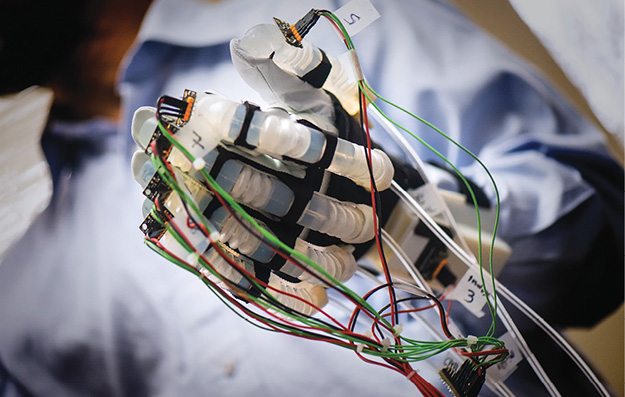Winter 2016: Energy Evolution
From carbon dioxide conversion to landfill mining, researchers at UTA are seeking viable alternative energy options.
Skip to content. Skip to main navigation.
From carbon dioxide conversion to landfill mining, researchers at UTA are seeking viable alternative energy options.
Found in everything from space shuttles to dental fillings, composite materials have thoroughly infiltrated modern society. But their potential is still greatly untapped, offering researchers ample opportunity for discovery.
Within the particle showers created at the Large Hadron Collider, answers to some of the universe’s mysteries are waiting.
Model systems like pigeons can help illuminate our own evolutionary and genomic history.
UT Arlington's tiny windmills are bringing renewable energy to a whole new scale.
The stability of our highways, pipelines, and even manholes is reaching a breaking point.
Scientists believe they have discovered a subatomic particle that is crucial to understanding the universe.
UT Arlington researchers unlock clues to the human body’s most mysterious and complex organ.
UT Arlington researchers probe the hidden world of microbes in search of renewable energy sources.
Wounded soldiers are benefiting from Robert Gatchel’s program that combines physical rehabilitation with treatment for post-traumatic stress disorder.
Tiny sensors implanted in the body show promise in combating acid reflux disease, pain and other health problems.
Nanotechnology researchers pursue hybrid silicon chips with life-saving potential.
Biomedical engineers combat diseases with procedures that are painless to patients.

New soft robotic glove offers a better therapy option for regaining mobility
Roughly 800,000 people in the United States suffer strokes each year, with nearly two-thirds experiencing impaired hand function as a result. For these patients, rehabilitation primarily centers on regaining mobility, but the loss of motion often remains a critical issue. Thankfully, a new, innovative piece of technology hopes to change that.
Research scientists at the UTA Research Institute (UTARI) have designed a soft robotic glove that can open and close a patient's hand, bringing recovery through a motion-therapy device that is less heavy, less expensive, and more compliant than current technologies.
Most commercial rehabilitation tools are based on hard (conventional) robotics, which often incorporate rigid exoskeleton structures and can be clunky, complicated, and costly. Soft robotic technology, on the other hand, employs pneumatically actuated structures that are relatively inexpensive and safer for the end-user.
Thanks to its novel soft actuator design, UTARI's glove offers a lightweight structure, individual control of joints, easy fabrication, and a flexible nature.
"Part of the focus in this development is to create a portable and independent system capable of applying and monitoring therapy without the constant supervision of a therapist," explains Muthu Wijesundara, project leader and UTARI principal research scientist. "The independence of the device is key."
His team—which includes University of North Texas Health Science Center (UNTHSC) researchers Rita Patterson, Nicoleta Bugnariu, and Timothy Niacaris—was awarded a grant through the Texas Medical Research Collaborative to bring their glove prototype into a clinical setting. The development will take place at UTARI, with UNTHSC clinical collaborators conducting safety and usability evaluations of the device.
Dr. Bugnariu notes that using the glove in the early stages of rehabilitation could prove especially beneficial: "If motion-therapy devices can be used to apply hand-opening and -closing motions starting early in the rehabilitation process, it would immensely aid the standard care of stroke patients and improve their long-term functional abilities and quality of life."